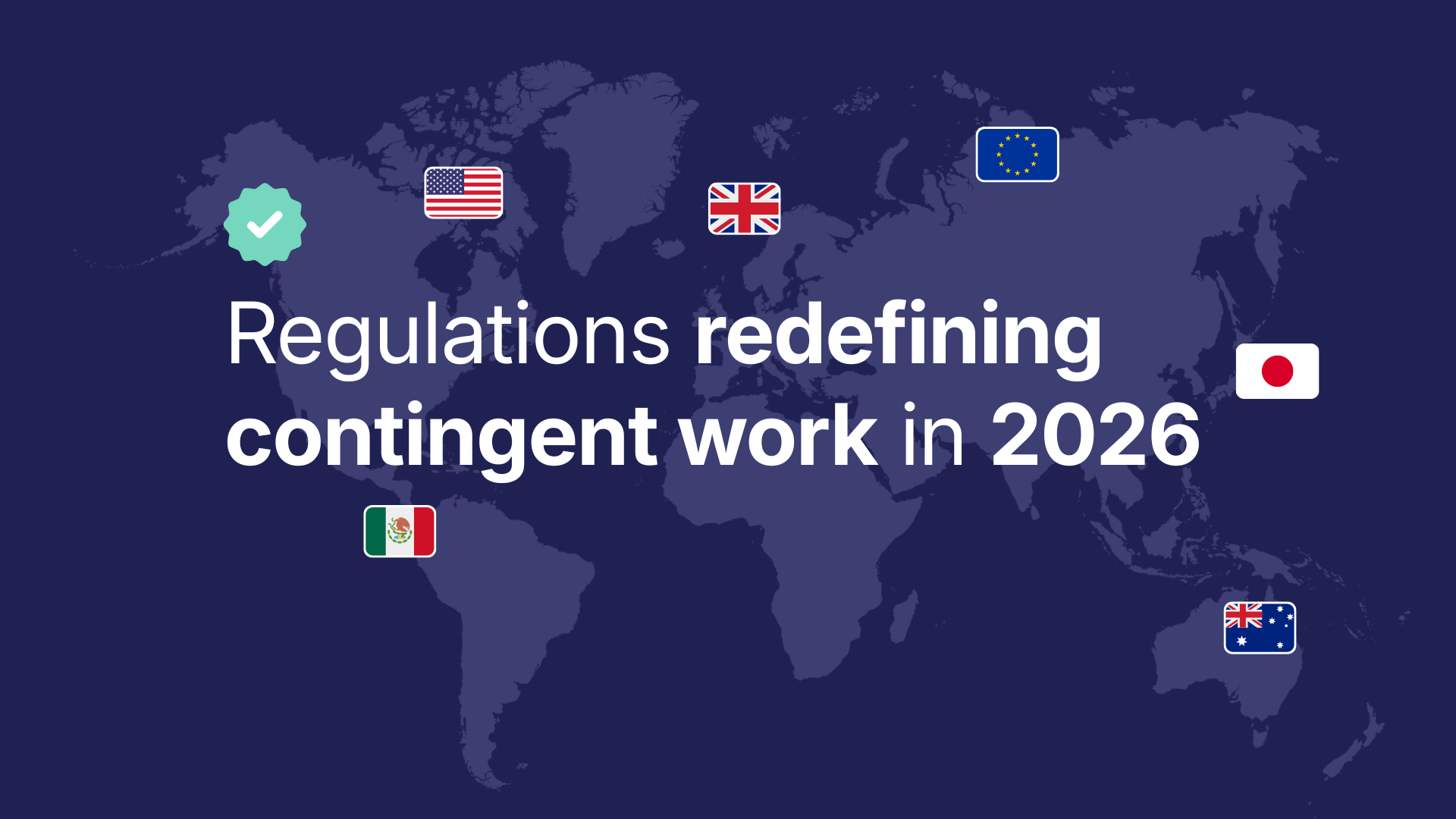The current state of the job market is challenging for everyone, even more so for hiring professionals who must consistently forecast demand and match candidates to job openings. The skills needed to successfully recruit and hire employees may be in short supply in today’s competitive job market. Thankfully, there are a variety of effective hiring solutions that can help your company successfully navigate this challenging time.
The key is to know what to look for in a hiring solution and how it will impact your company. The good news is that most solutions are aligned in providing the same benefits, and the bad news is that they come in many different forms. To make sure you’re getting the most out of hiring solutions, you need to understand what makes a solution effective and how that solution may affect your company.
Here are some different hiring solutions during uncertain times.
Consider Outsourcing
Outsourcing can mean different things in different contexts. You're not hiring an employee at your company—you're hiring an outside contractor to perform a specific task or set of functions.
- You might outsource to a project manager if you want someone to help get a project over the line or to own it from the start.
- Similarly, you could outsource content writing if you need blog posts but don't want to hire a full-time writer.
- You could also outsource your marketing efforts to help bring a fresh perspective to your brand.
Benefits of Outsourcing
With the right strategy and service provider, outsourcing can be one of the most effective ways for a company to maintain quality control, reduce costs and free up resources. Here are five benefits that companies should consider when evaluating whether or not outsourcing is right for them.
- Focus on core tasks: By delegating non-core business activities to a third party, organisations can focus their resources on functions that they do best. This can lead to efficiencies, improved quality, and lower costs.
- Lower costs: Companies may see significant cost savings through outsourcing by leveraging the provider's cost structure, economies of scale, and international labour markets.
- Promote growth: Outsourcing allows companies to reallocate capital toward growth opportunities—like launching new products and services—rather than supporting costly in-house operations that aren't aligned with their core competencies.
- Maintain operational control: Companies can outsource non-core business activities without relinquishing total active control. A vendor contract typically contains detailed service level requirements, which outline how functions will be managed and how performance will be measured.
- Offer staffing flexibility: Outsourcing allows you to use external resources as needed. This offers a tremendous amount of flexibility when utilising staff for suitable projects.
- Provide continuity and risk management: Outsourcing allows for continuity in staffing, even during adversity or transition. When employees leave, outsourced staff can continue working on projects, ensuring that no task is lost in transition.
Use Technology
Thanks to technological advances, there are many ways to eliminate barriers that may prevent you from hiring someone. For instance, you can use a video conferencing platform for interviewing candidates and assessing whether they're a good fit for your organisation. In addition, if you need an employee to start working immediately but cannot meet in person due to social distancing protocols, you can have them complete onboarding paperwork online and commence their work remotely.
In order to speed up the process and ensure that you are bringing the right person into your organisation, you could look at the technical screening software. This software can help measure professional aptitude while analysing the candidate’s skill levels. Also, you could look at digital talent assessment tools to make sure that they’re a good cultural fit for your existing team members and show that they can slot comfortably into the project.
All of these tools give hiring managers the confidence that they have an accurate assessment of professional skills. However, this can be time-consuming for both the hiring manager and the company while projects and plans get delayed as they wait for the right person. When freelancers are utilised for long term projects, many of these additional actions can be reduced as they can be vetted as trustworthy for your project and are ready to start immediately.
Create Flexible Roles
Rather than looking for someone who fits an existing job description, think about what skills and personality traits you're looking for. Then, consider if any of the people already working at your company have those characteristics—or if they know someone else who does. This strategy can help you fill a position without an official hiring process. You'll also be able to train an employee with the right attitude on specific tasks, rather than rely on their previous experience to determine whether or not they'll fit in with your company's culture.
Alternatively, it might not be a long term person that you’re looking to hire in order to work through a project. There’s no point bringing someone in for a role where you don’t have a long term plan for what they can contribute to the organisation. Suppose you decide to move an existing employee into a new role. In that case, utilising a freelancer to fill the employee's gap means that the machine keeps moving forward smoothly and drastically reduces training time.
Build a Talent Pool
A talent pool is a database of qualified applicants that you can draw from when you're ready to start hiring again. Having already screened thousands of candidates gives you a jump start on your search and saves you from having to post new job ads constantly. Pulling from a candidate database also helps remove bias in your hiring process; it puts all your potential hires on equal footing and lets their skills shine through. Plus, it's easy to set up! Anytime a candidate applies for one of your jobs but doesn't meet all of your requirements or isn't quite right for the role, add them to your talent pool instead of deleting them from your inbox or throwing away their resume.
However, it is essential to remember that this is a manual process and whoever is in charge of this needs to be careful to handle the candidate's data correctly. Also, making sure it is up to date can be another headache and making sure that the right people are managing the file to avoid data breaches. There is, of course, a tech option to prevent these problems from occurring. Using talent management software improves the internal sourcing process, ensuring that personal information is GDPR compliant and is a risk-free automated process.
Recruiting Tips During Times of Uncertainty
As uncertainty about the future spreads, staying focused on critical business matters can be challenging. But your company's continued success depends on it. To help you keep hiring, here are a few tips for recruiting during times of uncertainty:
Communicate now more than ever
The first thing you should do is connect with your current candidates and communicate with them regarding the status of their applications and any changes in your interview process. You can also use this opportunity to learn how they—like most people—are adjusting to this new reality and what they need from you for support. This will help build trust with candidates and set a positive precedent for your relationship.
Amplify open opportunities
It's more important than ever to ensure your open jobs are visible on every channel that matters to job seekers, including social media. This will give you a vast pool of candidates and show that you're still hiring, proving that your company is a safe place for talent in uncertain times.
Consider your remote work policies.
It is probably more important than ever to communicate whether your company is open to remote work or if you prefer that employees work on-site. Candidates will consider the flexibility they can expect from you as an employer in these uncertain times. They may also want to know if there are any safety measures for those who work on-site.
Promote work-from-home jobs
The landscape has changed for both employers and candidates, so consider this an excellent opportunity to promote job postings that allow the candidate to work from home. If a candidate is reluctant to come into the office for health or safety reasons, you can use a job posting like this as an enticement. This might also give you access to a broader pool of candidates since candidates who would otherwise not be able to commute may finally choose to apply for your position.
Keep It Simple
For hiring managers and business owners, the goal is the same: hire the best people for your team who will allow you to grow through your challenges. During uncertain times, it's more important than ever to ensure that you're taking advantage of all of the talent out there and that you're making the most of all of your options. As we’ve seen, there are many options at your disposal, from bringing on full-time employees to looking at the freelance option, which allows you to bring qualified candidates in for desired project lengths and offers you the freedom to renew contracts as they’re needed.





.jpeg)


